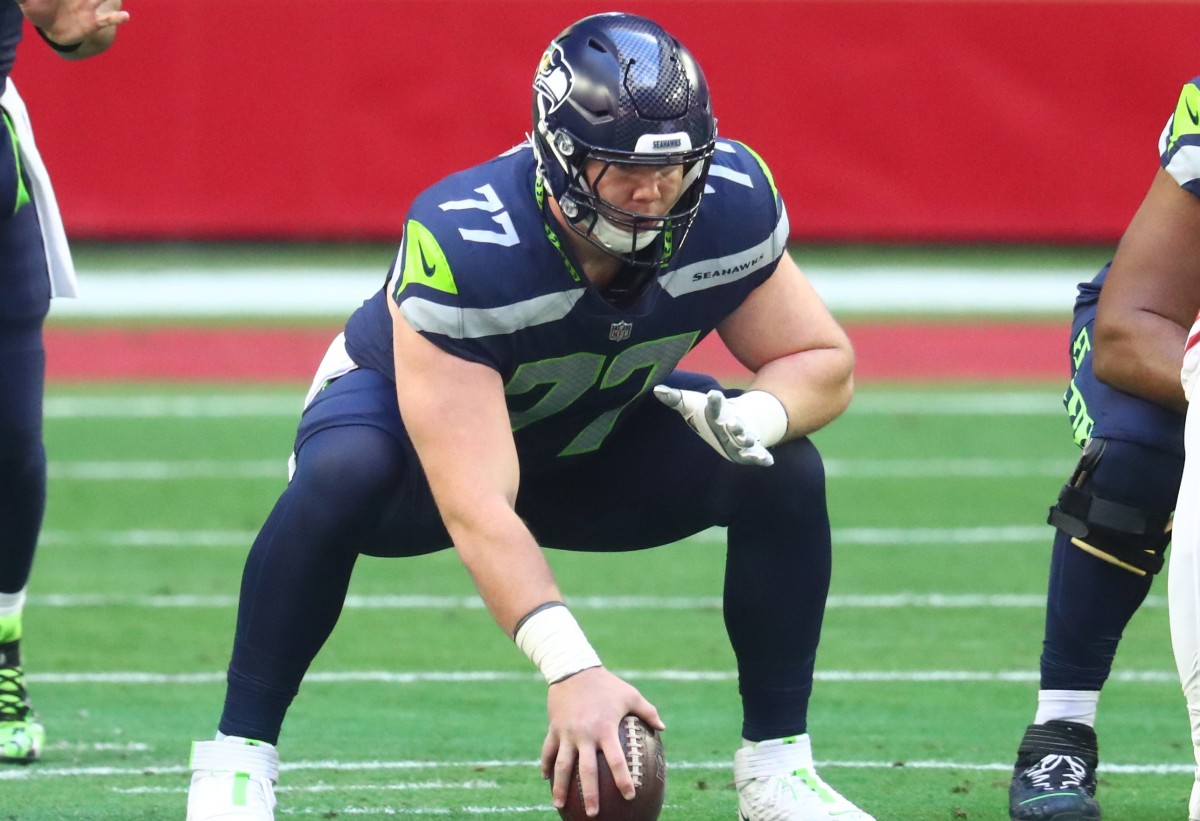
Signed to a one-year, $3 million dollar deal, bringing back Ethan Pocic was savvy business for the Seahawks. It may even count for a mere $1.5million against the cap if eligible for the veteran cap benefit.
Starting at center for the first time in his career, Pocic anchored Seattle's 2020 offensive line, which finished 9th in ESPN's Pass Block Win Rate metric. He remains familiar with Russell Wilson. Furthermore, given the addition of Gabe Jackson, the continuity of the OL unit will not be overly compromised thanks to his return - an element coaches and players have repeatedly emphasized the importance of. Pocic’s experience in other spots on the line is an added bonus. In the reduced-salary cap, limited-asset offseason of 2021, general manager John Schneider did well when he re-signed Pocic, who was picked in the second round of the 2017 NFL Draft.
It's important to stay measured, though, and Pocic's return isn't all positive. He limits the potential of both run and pass plays. He cannot live one-on-one, requiring constant help. One of the most frustrating parts to his game is when he thinks he has a defender reached when run blocking. He then gets backdoored and subsequently allows penetration that kills the down. This destroys zone runs, something that new offensive coordinator Shane Waldron presumably wants to continue - particularly mid-zone. In gap-blocked rushes like duo, Pocic’s inability to move guys without help is similarly limiting.
Pocic’s return to the Pacific Northwest should not be a surprise, however. Excellent value aside, he has a profile that stands out from the shiny, glossier, centers that were also available in free agency. I’m specifically talking about arm length. At the 2017 combine, Pocic measured in with 33 1/8-inch arms.
That 33-inch mark seems to be rather important for Seattle. Since Mike Solari became line coach in 2018, the Seahawks have never taken an interior offensive lineman with arms shorter than 33 inches. In 2020, Damien Lewis' arms measured at 33 inches and in 2019, guard Phil Haynes measured in at 33 1/2 inches.
A sample size of two men, guards at that, isn’t enough proof. Instead, consider that previous long-term centers in Seattle had arms near that 33-inch mark. Justin Britt was 33 1/2 inches. Max Unger was 32 1/2 inches. Both of these players earned their role before Solari’s arrival. Solari’s history suggests length from his snapper is even more important.
- 2010 and 2011 49ers Week 1 first-string center David Baas: 32 1/4 inches
- 2012 and 2013 49ers Week 1 first-string center Jonathan Goodwin: 33 1/2 inches
- 2014 49ers Week 1 first-string center Daniel Kilgore 32 1/2 inches
- 2016 and 2017 Giants Week 1 first-string center Weston Richburg 33 3/8 inches
The much-fantasized Seattle options in free agency this year were Corey Linsley, David Andrews, and Austin Blythe. Linsley became the highest-paid center in the NFL thanks to the Chargers, yet has 32-inch arms. Andrews returns to New England with his 31 7/8-inch arms. Austin Blythe, who began his professional career as a left guard, remains unsigned. Perhaps his 30 1/4-inch arms are part of the reason.
Before looking at some center prospects with the desired 33-inch length, I decided to ask Owen Riese why length matters—even on the interior of the offensive line. Riese was a graduate assistant at the University of Wisconsin-Whitewater. He coached Senior Bowl Star Quinn Meinerz and also helped with the talented prospect’s impressive pro day.
“Length helps in pass protection by being able to create separation from rushers,” Riese told me. “In the run game, it helps because you’re able to use spherical force to create torque to manipulate the defensive line how you want/need.”
So, that’s the importance of length briefly explained. In the 2021 NFL Draft, finding a center with arms around the 33-inch mark is even more difficult than usual. That’s because the NFL Combine was cancelled. Now, teams and draftniks are left scouring pro day numbers harder than a sink after Thanksgiving.
A solid starting point is the Senior Bowl measurements. These numbers should be the most reliable of the entire offseason. The interior offensive linemen who met the 33-inch arm mark were: Aaron Banks, Notre Dame, 33 1/8 inches; Robert Jones, Middle Tennessee State, 33 inches; Quinn Meinerz, Wisconsin-Whitewater, 33 inches; Ben Cleveland, Georgia, 33 inches; and Trey Smith, Tennessee, 33 6/8 inches.
The Seahawks could make it obvious and take Meinerz, a man with center playing time to directly compete with Pocic. Seattle obviously feels good about backup Kyle Fuller, too.
A different route would be for Schneider to take a prospect with plenty of experience at right guard. Cleveland fits this requirement. If he was able to impress enough in camp, it could see Damien Lewis make the switch from right guard to center and Pocic slot to the bench. Seattle would finally have size and power inside. This is presuming the newly acquired Gabe Jackson will slot in at left guard, where he spent the first two years of his NFL career.
"term" - Google News
March 22, 2021 at 10:37AM
https://ift.tt/3c6YkRy
Why Length Matters: Ethan Pocic and the Seahawks Long-Term Plans at Center - SeahawkMaven
"term" - Google News
https://ift.tt/35lXs52
https://ift.tt/2L1ho5r
Bagikan Berita Ini

















0 Response to "Why Length Matters: Ethan Pocic and the Seahawks Long-Term Plans at Center - SeahawkMaven"
Post a Comment